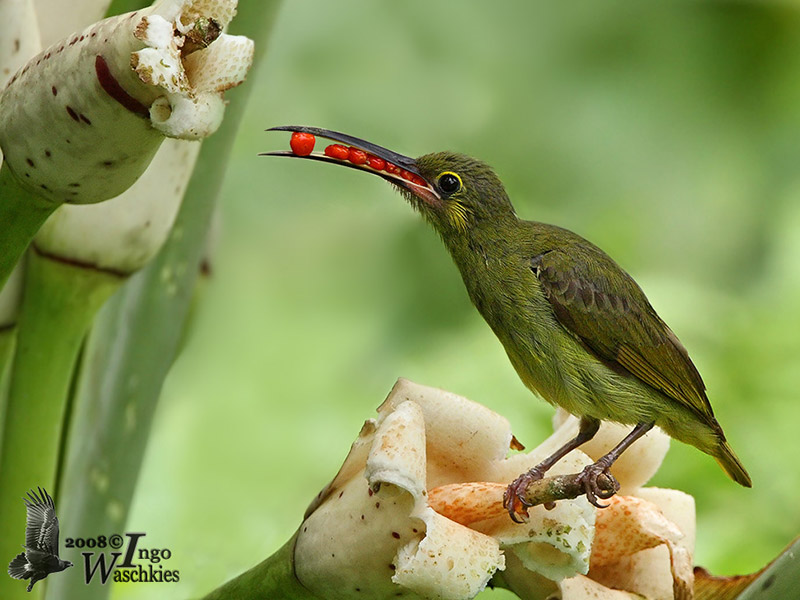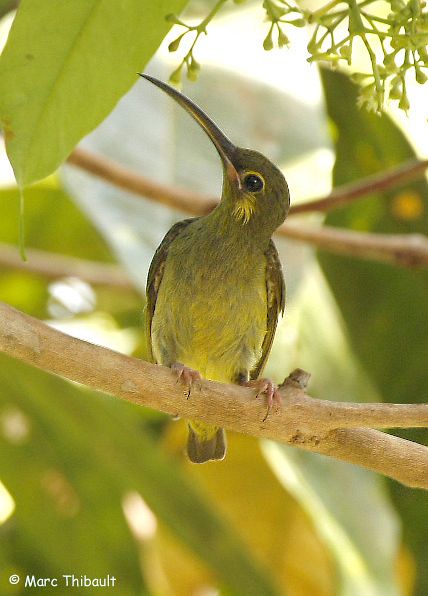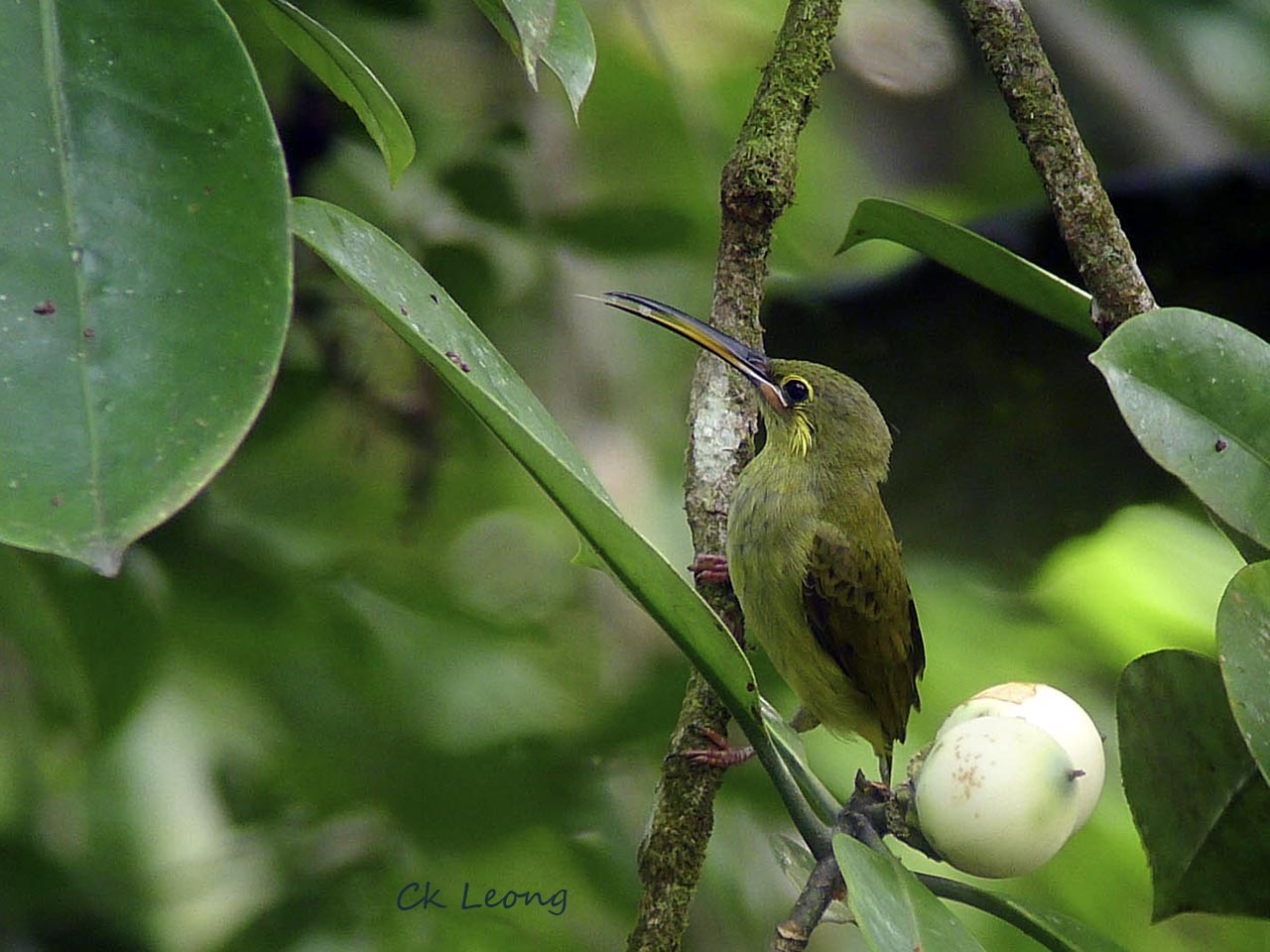
Arachnothera chrysogenys
SUBFAMILY
Arachnotherinae
TAXONOMY
Nectarinia chrysogenys Temminck, 1826, Bantam District, Java.
Two subspecies.
OTHER COMMON NAMES
English: Lesser yellow-eared spiderhunter; French: Arachnothиre
а joues jaunes; German: Gelbwangen-Spinnenjдger:
Spanish: Araсera de Orejas Amarillas Menor.
PHYSICAL CHARACTERISTICS
7 in (17.8 cm). Long-billed bird with greenish head fading to
brown upperparts and yellow underparts. Yellow ear patch and
ring around eye.
DISTRIBUTION
A. c. chrysogenys: southern Myanmar, southern Thailand, peninsular
Malaysia, western Borneo, Java, and Sumatra; A. c. harrissoni:
eastern Borneo.
HABITAT
Tops of trees in primary forest, secondary forests, plantations,
villages, and gardens. Found up to 5,900 ft (1,800 m).
BEHAVIOR
Forages singly or in pairs. Sometimes hovers and also hangs
upside-down when feeding.
FEEDING ECOLOGY AND DIET
Feeds on nectar, pollen, seeds, small fruits, insects, and spiders.
REPRODUCTIVE BIOLOGY
Nest is a neatly woven structure of vegetable matter sewn under
banana leaf or palm frond, sometimes with long entrance
tunnel. Inner cup, where eggs laid, made of finer material than
rest of nest. Clutch two white eggs with black lines and speckles
laid February to September.
CONSERVATION STATUS
Scarce, but not threatened.
SIGNIFICANCE TO HUMANS
None known.
Other popular Animals
Photo Gallery of - Yellow-eared spiderhunter




 Animalia Life
Animalia Life